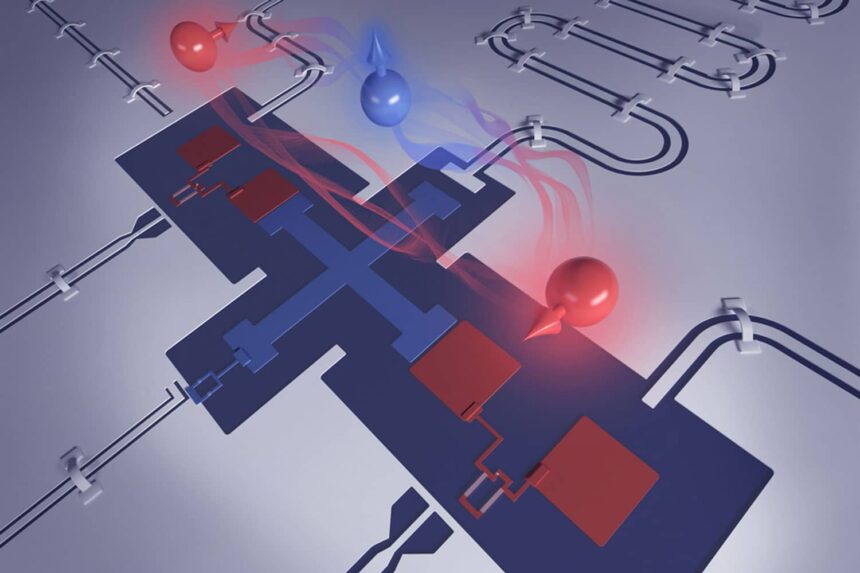The realization of large-scale quantum computation offers the promise of solving certain classes of problems exponentially faster than classical computers. However, the robustness of existing quantum computers in realizing error correction is a significant bottleneck.
To address this, MIT scientists developed a novel superconducting qubit architecture that can perform operations between qubits with enhanced accuracy. They used a new type of superconducting qubit- called fluxonium.
Fluxonium has a longer lifespan or coherence times than usually used superconducting qubits. Coherence time measures how long a qubit can perform operations or run algorithms before all the information in the qubit is lost. It also has a closer approximation to a two-level system.
This new architecture has a special coupling element- a tunable transmon coupler- between two fluxonium qubits that enables them to perform logical operations, known as gates, in a highly accurate manner. It conquers noise that brings error into quantum operations. This fluxonium-transmon-fluxonium (FTF) architecture enables a stronger coupling than methods directly connecting two fluxonium qubits.
In experiments, the approach enabled two-qubit gates to achieve 99.9 percent accuracy and single-qubit gates to 99.99 percent accuracy.
Using an extensible fabrication process, scientists implemented the architecture on a chip.
An EQuS postdoc, Max Hays, said, “Over the last couple of years, there have been several demonstrations of fluxonium outperforming transmons on the single-qubit level. Our work shows that this performance boost can also be extended to interactions between qubits.”
Kyle Serniak, a staff scientist and team lead at MIT Lincoln Laboratory, said, “This experiment was exemplary of what we call the ‘one-team model’: the close collaboration between the EQuS group and the superconducting qubit team at MIT-L. It’s worth highlighting here specifically the contribution of the fabrication team at MIT-LL — they developed the capability to construct dense arrays of more than 100 Josephson junctions specifically for fluxoniums and other new qubit circuits.”
Senior author William D. Oliver said, “Quantum error correction builds system resilience through redundancy. Adding more qubits can improve overall system performance, provided the qubits are individually ‘good enough.’ Think of trying to perform a task with a room full of kindergartners. That’s a lot of chaos, and adding more kindergartners won’t improve it.”
“However, several mature graduate students working together leads to performance that exceeds any one of the individuals — that’s the threshold concept. While there is still much to do to build an extensible quantum computer, it starts with high-quality quantum operations well above threshold.”
While such a computer is still 10 years away, this research is an essential step in the right direction. Scientists are further planning to demonstrate the advantages of the FTF architecture in systems with more than two connected qubits.
Journal Reference:
- Leon Ding, Max Hays, Youngkyu Sung et al. High-Fidelity, Frequency-Flexible Two-Qubit Fluxonium Gates with a Transmon Coupler. Physical Review X. DOI: 10.1103/PhysRevX.13.031035




